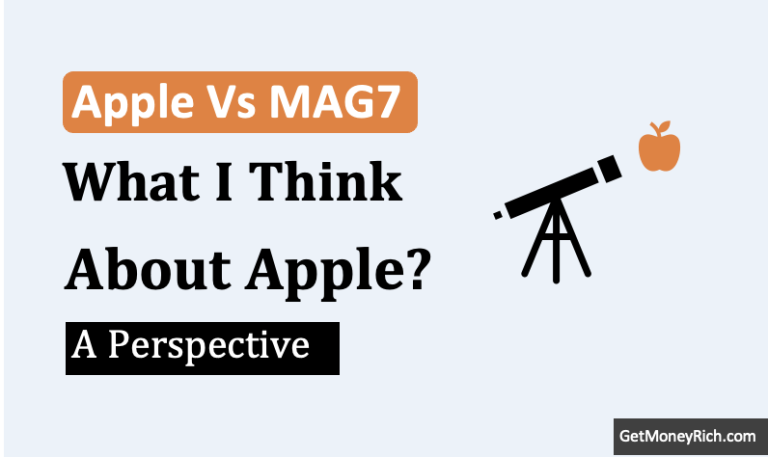Toast, Inc. (NYSE: TOST) stands out as a decent player in the technology sector. It specifically targets the restaurant industry with its cloud-based, all-in-one platform. For investors, understanding the fundamentals of Toast’s stock offers valuable insights into its growth potential, financial health, and market position. In this blog post, we’ll explore Toast’s business model, financial performance, and valuation metrics. We will also talk about key risks to provide a comprehensive analysis of this dynamic company.
Toast, Inc.’s Business Model
Toast, Inc. is not your typical tech company, it’s laser-focused on revolutionizing the restaurant industry.
Toast offers a cloud-based platform that integrates the following activities of the restaurant business:
- Point-of-sale (POS) systems,
- Payment processing,
- Digital ordering,
- Delivery management, and
- A suite of back-office tools like payroll and inventory management.
This all-in-one approach of Toast is designed to streamline operations for restaurants, from small independents to large chains. This software helps the restaurants to thrive in an increasingly digital world.
The company’s revenue primarily comes from:
- Payment processing fees (a percentage of gross payment volume),
- Subscription fees for its SaaS products, and
- Sales or leases of proprietary hardware.
With over 127,000 restaurant locations using its platform as of late 2024. Toast has carved out a niche in a massive, fragmented market. It competes against general-purpose POS providers like Square and Shopify.
Its vertical specialization and focus on restaurants give it a competitive edge. But it also faces challenges in maintaining profitability while scaling rapidly.
Financial Performance
To assess Toast’s fundamentals, let’s dive into its financial statements from 2020 to 2023. I’ll also show the recent data as of late 2024 (TTM). These figures provide a window into the company’s operational efficiency, profitability, and cash flow generation.
Income Statement Analysis
| Description | 12/31/2020 | 12/31/2021 | 12/31/2022 | 12/31/2023 | TTM |
|---|---|---|---|---|---|
| Total Revenue (Operating Revenue) | $823,000 | $1,750,000 | $2,731,000 | $3,865,000 | $4,658,000 |
| Cost of Revenue | $683,000 | $1,360,000 | $2,120,000 | $3,015,000 | $3,575,000 |
| Gross Profit | $140,000 | $390,000 | $611,000 | $850,000 | $1,083,000 |
| Operating Expenses | $389,000 | $638,000 | $886,000 | $1,330,000 | $1,109,000 |
| Operating Income (Loss) | -$249,000 | -$248,000 | -$275,000 | -$480,000 | -$26,000 |
| Net Income (Loss) for Common Stockholders | -$249,000 | -$487,000 | -$275,000 | -$246,000 | -$49,000 |
Toast’s revenue has skyrocketed, growing at a compound annual growth rate (CAGR) of about 41% from 2020 to 2024. The revenue growth driven by its expanding customer base and transaction volumes.
However, the company has consistently reported operating and net losses. There is a loss widening to -$480,000 in 2023. This isn’t unusual for a growth-stage tech company. Toast reinvests heavily in research and development, marketing, and infrastructure to capture market share. Notably, by Q3 2024, Toast achieved a net income of -$26 million. It is signaling progress toward profitability as it scales.
Gross margin have improved slightly, rising from 17% in 2020 to 22% in 2023. It is reflecting better cost management or higher-margin revenue streams like subscriptions. However, operating expenses—particularly selling, marketing, and R&D—have outpaced gross profit growth, keeping the company in the red. For investors, this highlights a trade-off: rapid growth at the cost of short-term profitability, with potential for long-term gains if Toast can sustain its momentum.
Balance Sheet Snapshot
| Description | 12/31/2020 | 12/31/2021 | 12/31/2022 | 12/31/2023 |
|---|---|---|---|---|
| Total Assets | $1,083,000 | $2,287,000 | $3,186,000 | $4,970,000 |
| Total Liabilities | $1,247,000 | $1,644,000 | $2,223,000 | $3,380,000 |
| Total Equity | -$471,000 | $1,093,000 | $1,091,000 | $1,590,000 |
| Cash and Cash Equivalents | $582,000 | $1,269,000 | $1,203,000 | $1,124,000 |
Toast’s balance sheet reflects its aggressive growth strategy. Total assets have nearly quadrupled, driven by investments in property, plant, and equipment (PPE) for hardware and intangible assets like goodwill from acquisitions.
Liabilities have also risen, primarily due to long-term debt and capital leases, but equity turned positive in 2021 and grew to $1,590,000 by 2023, bolstered by equity raises and retained earnings adjustments.
Liquidity remains strong, with a current ratio averaging around 3.3 (current assets divided by current liabilities), indicating Toast can comfortably meet short-term obligations. The debt-to-equity ratio, at 2.13 in 2023, shows moderate leverage, but the positive equity base mitigates solvency concerns for now.
Cash Flow Trends
| Description | 12/31/2020 | 12/31/2021 | 12/31/2022 | 12/31/2023 | TTM 12/31/2023 |
|---|---|---|---|---|---|
| Operating Cash Flow | $12,500 | $2,000 | -$15,600 | $13,500 | $30,500 |
| Investing Cash Flow | -$36,000 | -$50,300 | -$89,000 | -$86,000 | -$25,000 |
| Financing Cash Flow | $594,000 | $75,900 | $38,000 | $6,300 | $12,000 |
| Net Change in Cash | $571,000 | $27,600 | -$66,600 | -$66,200 | $17,500 |
| Free Cash Flow | -$16,100 | -$17,000 | -$18,900 | $9,300 | $25,300 |
Cash flow analysis reveals a company in transition.
Operating cash flow turned positive in 2023 ($13,500) and surged to $30,500 in TTM. It is driven by non-cash items like stock-based compensation and working capital improvements, despite net losses.
Investing outflows for PPE and acquisitions remain significant, but TTM shows a reduction, suggesting a shift toward operational efficiency.
Financing inflows, once heavy in 2020 ($594,000) from equity and debt raises, have tapered off, indicating Toast is less reliant on external capital.
The positive free cash flow in 2023 and TTM ($9,300 and $25,300, respectively) is a promising sign, aligning with its Q3 2024 profitability milestone.
Valuation Metrics: Is Toast Undervalued or Overvalued?
Toast’s stock valuation provides insight into its market perception. As of February 2025, the share price is $37.89, with a market capitalization of $21.73 billion. Here’s how it stacks up historically:
| Description | 9/30/2024 | 6/30/2024 | 3/31/2024 | 12/31/2023 | 9/30/2023 |
|---|---|---|---|---|---|
| Market Cap | $21.56B | $16.00B | $14.31B | $13.68B | $9.08B |
| Enterprise Value (EV) | $20.17B | $14.82B | $13.23B | $12.57B | $8.97B |
| Price/Sales (P/S) Ratio | 4.49 | 3.52 | 3.37 | 3.44 | 2.94 |
| Price/Book (P/B) Ratio | 13.96 | 12.47 | 12 | 11.52 | 8.63 |
Toast’s valuation metrics suggest it trades at a premium, typical for high-growth tech companies.
- The P/S ratio, currently at 4.49, indicates investors are willing to pay $4.49 for every dollar of sales, reflecting confidence in its revenue growth (41% CAGR from 2020–2024).
- However, the P/B ratio of 13.96 is significantly higher, showing the market values Toast’s intangible assets, growth potential, and market position far above its book value.
- This premium valuation could signal overvaluation for value investors, but growth investors might see it as justified given Toast’s trajectory toward profitability.
The enterprise value (EV) of $20.17 billion, slightly below market cap, accounts for net debt and cash. It suggests Toast’s capital structure is manageable.
Compared to peers like Square or Shopify, Toast’s P/S and P/B ratios are higher. It is reflecting its niche focus and growth stage. But it’s worth monitoring whether these multiples remain sustainable as profitability solidifies.
Key Risks and Challenges
While Toast’s fundamentals show promise, there are notable risks investors should consider.
- First, the restaurant industry is highly cyclical and sensitive to economic downturns, which could impact Toast’s payment processing volumes and subscription renewals.
- Second, competition from broader POS providers and new entrants could erode its market share.
- Third, the company’s historical losses and high operating expenses raise concerns about achieving consistent profitability, especially if growth slows.
- Finally, its valuation, while justified by growth, leaves little margin for error—if revenue growth stalls or costs escalate, the stock could face pressure.
Why Toast Matters
Toast’s fundamentals paint a picture of a high-growth company transitioning toward profitability.
Its revenue growth, improving cash flows, and recent profitability in Q3 2024 signal potential for long-term success. But its premium valuation and historical losses warrant caution.
For growth-oriented investors, Toast offers an exciting opportunity in the restaurant tech space particularly as digital adoption accelerates. For value investors, the high P/S and P/B ratios might suggest waiting for a dip or more consistent profitability.
As Toast continues to expand internationally (e.g., Ireland, India) and innovate its platform, its ability to balance growth and profitability will be critical.
With a market cap of $21.73 billion and a share price of $37.89, the stock reflects high expectations. Whether it can deliver on those expectations will depend on execution, market conditions, and its ability to navigate the restaurant industry’s challenges.
For now, Toast, Inc. remains a compelling story for investors willing to bet on its vision of transforming restaurant operations.
Keep an eye on next 2 or 3 quarters results to see if profitability becomes the norm rather than the exception.
Whether you’re a growth seeker or a cautious analyst, Toast’s journey offers plenty to watch in the evolving tech landscape.
Have a happy investing.






